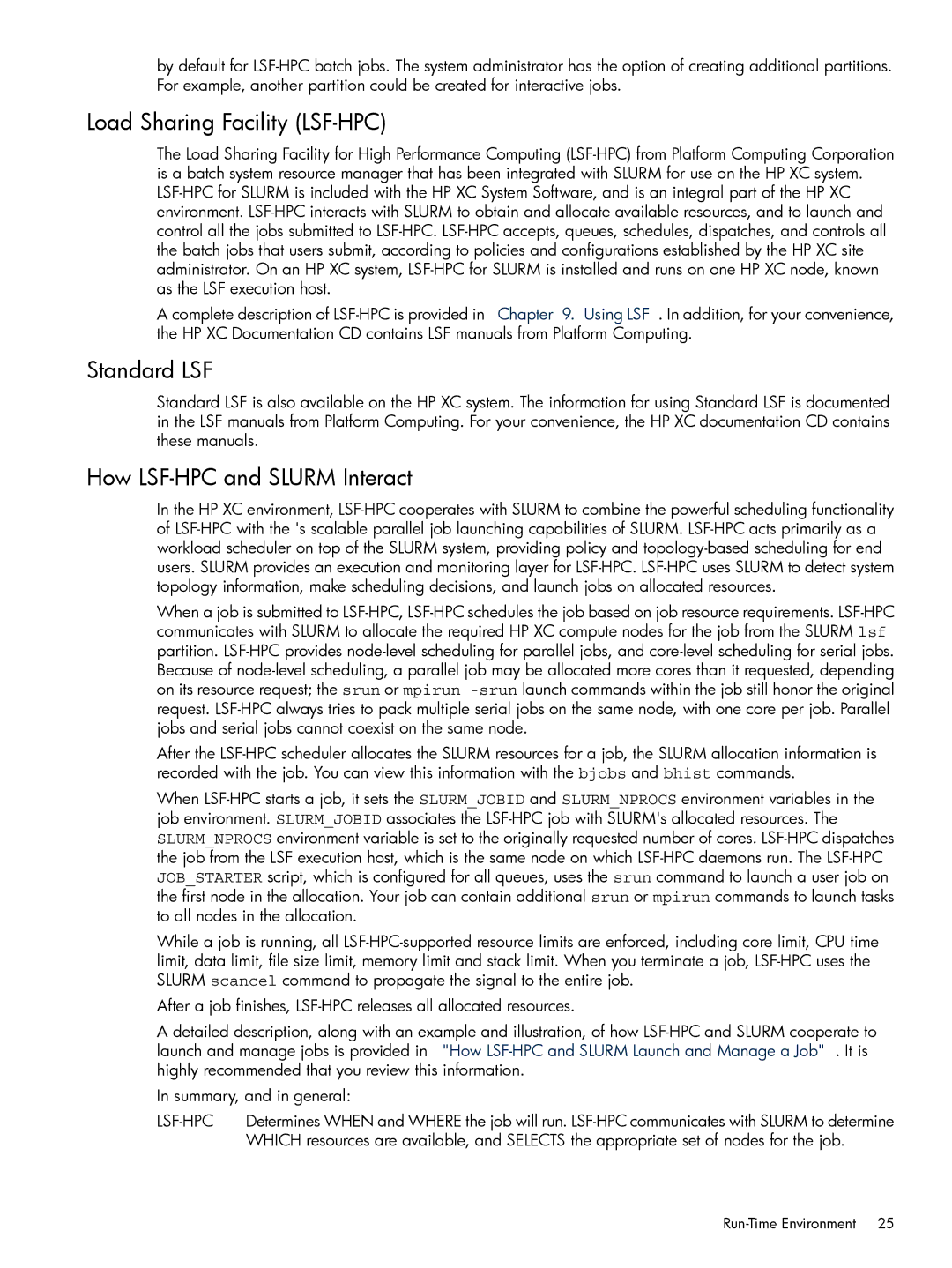by default for
Load Sharing Facility (LSF-HPC)
The Load Sharing Facility for High Performance Computing
A complete description of
Standard LSF
Standard LSF is also available on the HP XC system. The information for using Standard LSF is documented in the LSF manuals from Platform Computing. For your convenience, the HP XC documentation CD contains these manuals.
How LSF-HPC and SLURM Interact
In the HP XC environment,
When a job is submitted to
After the
When
While a job is running, all
After a job finishes,
A detailed description, along with an example and illustration, of how
In summary, and in general:
| Determines WHEN and WHERE the job will run. |
| WHICH resources are available, and SELECTS the appropriate set of nodes for the job. |
